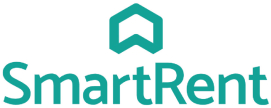The information in this prospectus is not complete and may be changed. Neither we nor the Selling Stockholders may sell these securities until the registration statement filed with the Securities and Exchange Commission is effective. This prospectus is not an offer to sell these securities and it is not soliciting an offer to buy these securities in any jurisdiction where the offer or sale is not permitted.
SUBJECT TO COMPLETION, DATED SEPTEMBER 23, 2021
PRELIMINARY PROSPECTUS

132,632,441 Shares of Class A Common Stock
This prospectus relates to the resale from time to time of an aggregate of 132,632,441 shares of our Class A Common Stock, $0.0001 par value per share (“Class A Common Stock”), by the Selling Stockholders (as defined below), which consists of (i) 117,132,441 shares of our Class A Common Stock issued in connection with the Business Combination (as defined below) and (ii) 15,500,000 shares of our Class A Common Stock issued in the PIPE Transaction (as defined below).
On August 24, 2021, we completed the business combination (the “Business Combination”) contemplated by the merger agreement, dated as of April 21, 2021 (as amended, the “Merger Agreement”), by and among Fifth Wall Acquisition Corp. I, a Delaware Corporation (“FWAA”), Einstein Merger Corp. I, a Delaware corporation and wholly owned subsidiary of FWAA (“Merger Sub”), and SmartRent.com, Inc., a Delaware corporation (prior to the consummation of the Business Combination, “Legacy SmartRent”).
We are registering the resale of the shares of our Class A Common Stock covered by this prospectus as required by (i) an amended and restated registration rights agreement, dated as of August 24, 2021 (the “Registration Rights Agreement”), entered into by and among us, Fifth Wall Acquisition Sponsor, LLC, a Delaware limited liability company (“Sponsor”) and certain stockholders of Legacy SmartRent and (ii) the subscription agreements (collectively, the “Subscription Agreements”) entered into by and between FWAA and certain qualified institutional buyers and accredited investors (the “PIPE Investors”) relating to the purchase of shares of our Class A Common Stock in private placements consummated in connection with the Business Combination (the “PIPE Transaction”). The registration of the shares of our Class A Common Stock covered by this prospectus does not mean that any of the Selling Stockholders will offer or sell any of their shares of Class A Common Stock in this offering. The Selling Stockholders may offer, sell or distribute all or a portion of the shares of our Class A Common Stock registered hereby publicly or through private transactions at prevailing market prices or at negotiated prices. We provide more information about how the Selling Stockholders may sell their shares of our Class A Common Stock in the section entitled “.”
Plan of Distribution
We are an “emerging growth company” as defined in Section 2(a) of the Securities Act of 1933, as amended (the “Securities Act”), and are subject to reduced public company reporting requirements. This prospectus complies with the requirements that apply to an issuer that is an emerging growth company.
The shares of our Class A Common Stock are listed on the New York Stock Exchange (the “NYSE”) under the symbol “SMRT.” Prior to the Business Combination, shares of FWAA’s Class A Common Stock were traded on The Nasdaq Stock Market LLC (“Nasdaq”) under the ticker symbol “FWAA.” On September 22, 2021, the closing sale price per share of our Class A Common Stock was $12.99.
We will not receive any proceeds from the resale of shares of our Class A Common Stock by the Selling Stockholders. We will bear all costs, expenses and fees in connection with the registration of the shares of our Class A Common Stock. The Selling Stockholders will bear all commissions and discounts, if any, attributable to their respective sales of the shares of our Class A Common Stock.
INVESTING IN OUR SECURITIES INVOLVES A HIGH DEGREE OF RISK. SEE THE SECTION ENTITLED “
RISK FACTORS
” BEGINNING ON PAGE 5 OF THIS PROSPECTUS TO READ ABOUT FACTORS YOU SHOULD CONSIDER BEFORE BUYING SHARES OF OUR CLASS A COMMON STOCK.
Neither the Securities and Exchange Commission nor any state securities commission has approved or disapproved of the securities to be issued under this prospectus or determined if this prospectus is truthful or complete. Any representation to the contrary is a criminal offense.
The date of this prospectus is , 2021.
